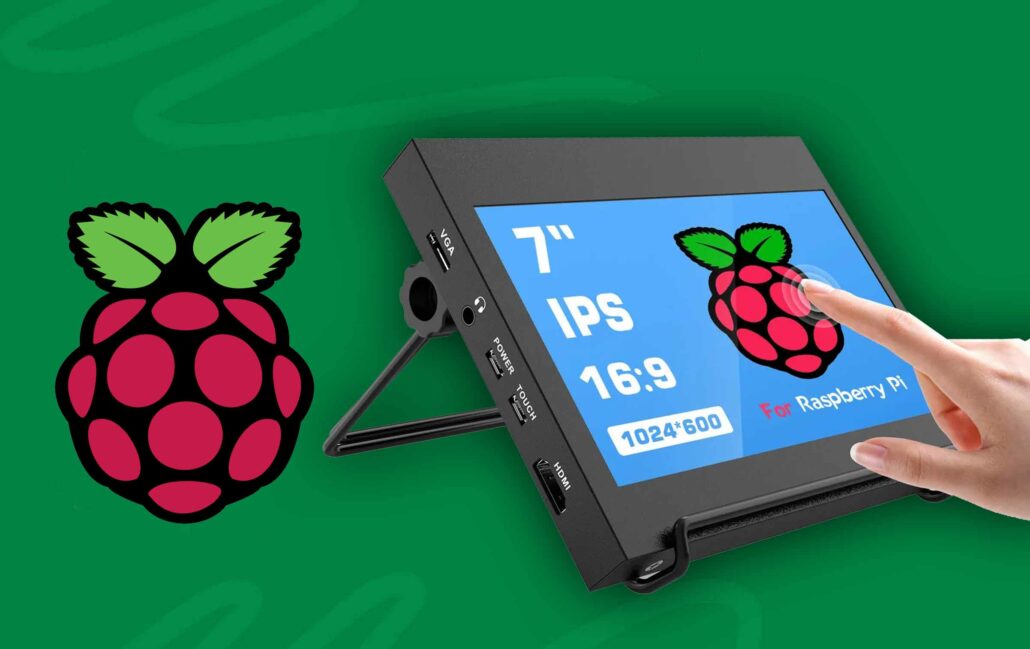Raspberry Pi is a small computer device that’s not larger than a credit card and capable of connections with various input and output peripherals. This includes the monitors, televisions, mice, or keyboards. This enables the transformation of the setup into a fully functional PC, all at an affordable price point. It has undergone numerous repetition variations since it was launched in 2012.

Additionally, the real model featured a single-core 700MHz CPU paired with a modest 256MB of RAM. However, the latest model offers a quad-core CPU running at speeds over 1.5GHz and 4GB of RAM. Furthermore, it have consistently maintained an affordable price point, below $100. Notably, the Pi Zero stands out for its remarkable affordability, priced at just $5.
How Does It Work
Raspberry Pi operates as a programmable device with essential motherboard features similar to those found in standard computers, without built-in peripherals or internal storage. To begin the Raspberry computer, an SD card must be inserted into the designated space. This SD card is essential as it houses the operating system required for the computer to boot.
Additionally, Raspberry computers are compatible with the Linux operating system, which reduces memory requirements and is a platform for various applications. Once the OS is set up, it can be connected to output devices such as computer monitors or High-Definition Multimedia Interface (HDMI) televisions. Moreover, input units such as mice or keyboards should be paired. The use and application of this small computing device are based on the buyer and can settle many functions.
What Is Raspberry Pi Foundation
The Raspberry Pi Foundation operates to access computing and digital creativity worldwide. It offers low-cost, high-performance computers, and engages individuals in learning, problem-solving, and recreational activities. Additionally, it extends its reach through outreach and education to assist more individuals in computing and digital designing.
It establishes free resources designed to learn about computing and computer-based making and training programs for educators to guide others in the learning process Furthermore, Code Club and CoderDojo are parts of the Foundation.
The Foundation promotes these clubs and collaborates to expand its global network to ensure that children have the opportunities to learn computing. Lastly, Raspberry Jams are community-focused events around it, for individuals of all ages to gather, and gain knowledge, related to its technology.
Types of Models
For individuals seeking to secure one of these computers, navigating through the multitude of models and generations released can be challenging. However, some of the best models of Raspberry Pi available include:
Raspberry Pi Zero
The Raspberry Pi Zero stands as the most affordable model designed by the company. Most individuals obtain it for $5, especially when considering its versatile capabilities. Despite not being the first model, it provides a smaller and more condensed design compared to the Raspberry Pi 1.
Additionally, it has identical processor RAM (512 MB) as the Pi 1 Model B+, but it lacks built-in Wi-Fi or Bluetooth connectivity. However, internet accessibility can be achieved through USB connectivity.
Raspberry Pi 1
The Raspberry Pi 1 Model B was launched in 2012, establishing a foundational size for future launches. Additionally, it’s equipped with 26 GPIO pins, 256MB RAM capacity, and a single CPU core, and not suitable for many tasks with high processing requirements. It includes four USB ports and an Ethernet connection at the rate of $25. Lastly, the Pi 1 Model A+ priced at $20 offers faster CPU processing speed but lacks an Ethernet connection.
Raspberry Pi 2 B
In February 2015, Raspberry launched the 2B model, unlike the previous releases. The Raspberry Pi 2 B enhanced memory and speed, with the RAM capacity boosted to 1GB. It maintains the standard size and offers 4 USB ports. Additionally, it’s priced at approximately $35 and remains quite affordable considering its enhanced features.
Raspberry Pi 3
The Raspberry Pi 3 presents users with a range of standard HDMI and USB ports, 1GB of RAM, Wi-Fi, and Bluetooth connectivity, with an Ethernet capability. Additionally, this model operates with minimal heat generation and power consumption, for projects requiring passive cooling. Furthermore, it provides exceptional value for its features and capabilities at the price of$35.
Raspberry Pi 4B
The Raspberry Pi 4B represents an improvement from its predecessors, offering a range of memory capacities from 2GB to 8GB RAM. Additionally, it offers a faster 1.5GHz processor and a blend of 2.0 and 3.0 USB ports for users. This model is ideal for virtually any use case, with its sufficient RAM capacity capable of satisfying even programmers. Its prices range from $35 to $75 based on the memory selected variant including all connectivity options.
Raspberry Pi 400
This model offers its keyboard form factor, which sets it apart from its predecessors. It was launched in 2020 with 4GB of RAM and offers standard USB ports for only a monitor and mouse to function as a complete home computer setup. It offers a price point of $70, particularly suitable for classroom use, providing an effective computing solution.
What Can You Use Raspberry Pi For
Many individuals purchase a Raspberry Pi intending to learn to code, while others code to utilize it to understand electronics and coding for physical projects. It presents opportunities to make home automation projects, within the open-source community, unlike proprietary closed systems.
The Raspberry Pi is known for its versatility and power, making it suitable for a wide range of projects. From educational endeavors to difficult systems, it offers a cost-effective solution. Its GPIO connector enables easy connection with various modules, appealing to both enthusiasts and professionals.
Moreover, advancements in processing power, memory, and connectivity have been evident in successive models, enhancing its capabilities. Whether you’re into programming, electronics, or innovative projects, it serves as a robust platform for exploration and creativity.
